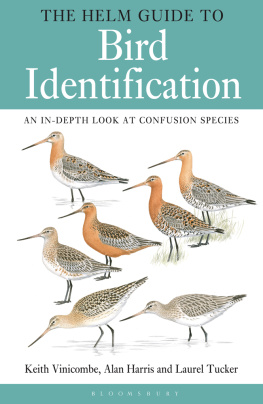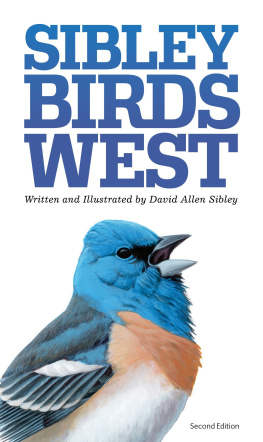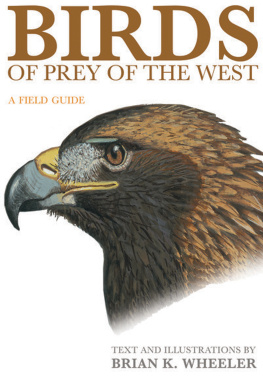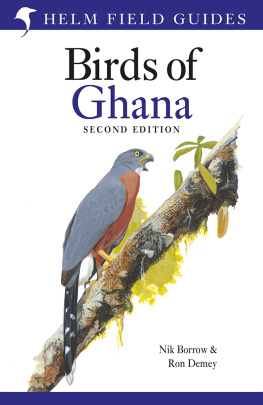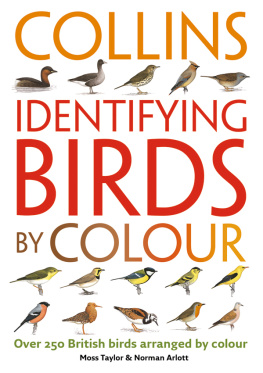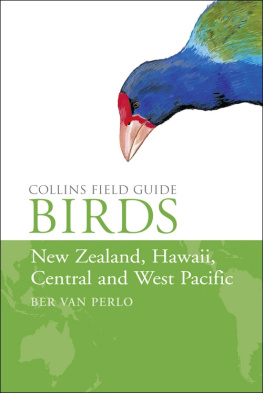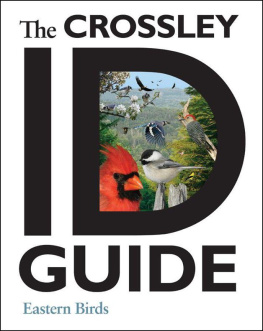Laurel Tucker
Laurel died on 20 June 1986, having suffered a cerebral haemorrhage from which she never regained consciousness. She was 35. We had been together for nearly three years and she embarked upon the first version this book with great enthusiasm, excited at the prospect of a joint project together. In the event, she completed only 18 of the plates. Laurel was a remarkable woman, whose vivid and intense personality was somehow reflected in her illustrations. It is hoped that this new edition and its predecessor, together with the Handbook of Bird Identification by Mark Beaman and Steve Madge, will serve as a testament to her remarkable ability, both as a bird illustrator and as a birder. It is, of course, dedicated to her memory.
K.E.V.
This book is based on the Macmillan Field Guide to Bird Identification, which was first published in 1989. The original book was born out of a meeting in 1985 between Laurel Tucker and Dr Tim Sharrock, the latter in his capacity as natural history consultant to Macmillan. The idea was to produce a book that would tackle in depth the problems of identifying difficult birds. It was felt that the standard field guides, mainly because of lack of space and, in some cases, poor illustrations, could not do justice to the problem of separating similar species. The result was, in essence, a series of well-illustrated mini identification papers. The original book proved to be anenormous success but, unfortunately, it has been out of print for many years. Choosing the original subjects was problematical, but it was decided to include mainly those regularly occurring British species that present a problem for the average birder and to include only those rarities that are frequently confused with something more common.
In this new version, we have expanded the range of species included. The taxonomy generally follows Mitchell & Vinicombe (2011). Most of the additions simply reflect the remarkable changes in the status of many species over the last 20 years, coupled with changes in taxonomy, partly brought about by advances in the study of DNA. As with the original book, inconsistencies have been inevitable, the most difficult problem being species creep. For example, it is difficult to discuss the identification of the regularly occurring Melodious and Icterine Warblers without dealing with Olivaceous Warbler (now split into Eastern and Western) and, in turn, Booted Warbler, which in itself leads to the unavoidable discussion of the recently split Sykess Warbler. In other cases, discussion has been confined to the commoner species, as to have gone into detail on the extreme rarities would have been beyond the scope of the book. Although in recent years there has been a marked trend towards the almost forensic examination of minute feather detail, this book offers advice on how to identify birds in the field, when the instinctive evaluation of shape, flight, behaviour and call is just as important this overall impression that a bird gives is often termed its jizz. It is hoped that, as with the original, the end result will appeal not only to relative beginners but also to those more seasoned observers with gaps in their knowledge.
In order to facilitate the efficient exposition of difficult identification problems, a rigid format has been abandoned. Each chapter has been arranged in the form of a mini identification paper to best suit the topic under discussion. As it is important to be aware of the likelihood of any particular species occurring in a given area at a given season, each article is prefaced with a short section entitled Where and when, but it must be stressed that this is only a generalised outline that cannot account for every eventuality. Many accounts end with a short list of references. These point the way to books and articles that contain useful additional information or which go into various aspects of the identification in more detail.
Bird names
Since the first edition, there have been a number of changes to English bird names, some of which have been widely accepted, others almost universally ignored. The names used in this book attempt to reflect current normal usage by ordinary birders but, for the sake of clarity, some epithets (such as Barn Swallow) have occasionally been used.
Statistics
The rare breeding bird, scarce migrant bird and rare bird statistics have been taken from the official record published in British Birds (see Bibliography) and relate to Britain (but exclude Ireland). Their use attempts to quantify the likelihood of any given species being seen at a specific time and place. All are taken from the most recent reports: rare breeding bird data being accurate to 2010, the rare bird data to 2011 and the scarce migrant data to 2007. Current averages are based on the most recent ten years. Waterbird counts are taken from the annual report Waterbirds in the UK and are accurate up to 2010/11.
Knowing the common birds
The only way to become an expert birder is to spend as much time as possible in the field and, as in all things, practice makes perfect. However, time should be spent not just in acquiring a large life list but in getting to know common birds. The secret to identifying a rarity is the ability to eliminate the common confusion species: how, for example, can you identify a Ring-billed Gull if you have never bothered to take a close look at a Common Gull?
Keep an open mind
When faced with something unusual, do not automatically assume that it is a rarity. Consider all of the other possibilities. Could its appearance be due to individual variation? Is it something common in an unfamiliar plumage? Is it aberrant? Is it a hybrid? Is it an escaped cagebird? If you are stuck, take a full description or a photograph, but always try to get someone else to look at the bird. This is especially important with rarities, as substantiated observations will have a much better chance of acceptance. On the other hand, try to make up your own mind about an identification and do not be bamboozled by so-called experts who are not.
Calls
Most good birders identify a large proportion of birds by calls and songs. Unfortunately, there is no shortcut to learning calls, but try to follow up all the unidentified bird calls that you hear. Bird recordings may help, but they are no substitute for hearing the real thing within the context of its natural environment.
Fieldcraft
Standards of fieldcraft have declined over the years, presumably because so many observers now birdwatch from hides or turn up at a twitch to find their quarry already under observation. Remember the old rules of wearing sombre clothing and moving quietly and smoothly. Also, remember the benefits of patient stalking, and do not be afraid to crawl on all fours or to duck down below vegetation to avoid flushing the birds that you are pursuing. It is often possible to get close to birds by using even scanty vegetation as cover. Conversely, on modern bird reserves, many species have become so used to people walking along regular trails that they do not feel threatened by our presence and can be approached very closely.
Note-taking
When faced with an unusual bird, it is imperative that you take exhaustive field notes on the spot. If this is not possible, then write some notes on the same day, before you go to bed (once you have slept, the brain seems to file away your photographic mental image into a different intellectual part of the brain, so you will no longer be able to accurately recall what you have seen). It is also useful to take notes on unfamiliar plumage types and on anything else that attracts attention, as note-taking aids the learning process. The easiest way to take notes is to make an annotated sketch: if you cannot draw, just use two circles, one for the head and one for the body. Drawing the bird ensures that all parts are checked. When drawing, it does not matter quite so much if you forget the names of the feather tracts as these can be checked when you get home, but try to familiarise yourself with how the feathers lie, particularly on the wing (it is essential to know which are the median coverts, greater coverts, tertials etc.).
Next page
